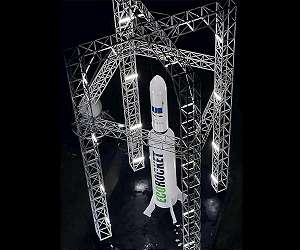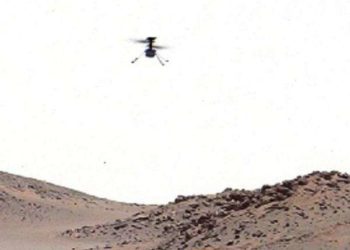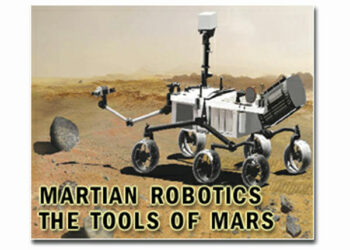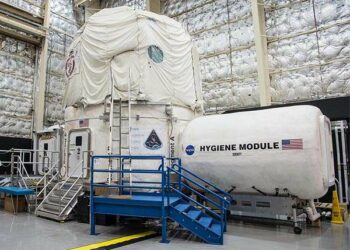For a long time, our view of Ceres was fuzzy, said Scott King, a geoscientist in the Virginia Tech College of Science. A dwarf planet and the largest body found in the asteroid belt – the region between Jupiter and Mars speckled with hundreds of thousands of asteroids – Ceres had no distinguishable surface features in existing telescopic observations from Earth.
Then, in 2015, the hazy orb that was Ceres came into view. That view was stunning to scientists such as King. Data and images collected by NASA’s Dawn mission gave a clearer picture of the surface, including its composition and structures, which revealed unexpected geologic activity.
Scientists had seen the general size of Ceres in earlier observations. It was so small it was assumed to be inactive. Instead, Dawn discovered a large plateau on one side of Ceres that covered a fraction of the dwarf planet, similar to what a continent might take up on Earth. Surrounding it were fractures in rocks clustered in one location. And there were visible traces of an ocean world: deposits all over the surface where minerals had condensed as water evaporated – the mark of a freezing ocean.
A professor in the Department of Geosciences, King, who mostly studies larger bodies such as planets, wanted to know how a body as small as Ceres could generate the heat needed to power that kind of geological activity and account for the surface features picked up by Dawn.
Through modeling, he and a team of scientists from multiple universities as well as the United States Geological Survey and the Planetary Science Institute found that the decay of radioactive elements within Ceres’s interior could keep it active. Their findings were recently published in American Geophysical Union Advances.
King’s study of big planets such as Earth, Venus, and Mars had always shown him that planets start out hot. The collision between objects that form a planet creates that initial heat. Ceres, by contrast, never got big enough to become a planet and generate heat the same way, King said. To learn how it could still generate enough heat to power geologic activity, he used theories and computational tools previously applied to bigger planets to study Ceres’s interior, and he looked for evidence that could support his models in data returned by the Dawn mission.
The team’s model of the dwarf planet’s interior showed a unique sequence: Ceres started out cold and heated up because of the decay of radioactive elements such as uranium and thorium – which was alone enough to power its activity – until the interior became unstable.
“What I would see in the model is, all of a sudden, one part of the interior would start heating up and would be moving upward and then the other part would be moving downward,” King said.
That instability could explain some of the surface features that had formed on Ceres, as revealed by the Dawn mission. The large plateau had formed on only one side of Ceres with nothing on the other side, and the fractures were clustered in a single location around it. The concentration of features in one hemisphere signaled to King that instability had occurred and had left a visible impact.
“It turned out that you could show in the model that where one hemisphere had this instability that was rising up, it would cause extension at the surface, and it was consistent with these patterns of fractures,” King said.
Based on the team’s model, Ceres didn’t follow a planet’s typical pattern of hot first and cool second, with its own pattern of cool, hot, and cool again. “What we’ve shown in this paper is that radiogenic heating all on its own is enough to create interesting geology,” King said.
He sees similarities to Ceres in the moons of Uranus, which a study commissioned by NASA and the National Science Foundation recently deemed high priority for a major robotic mission. With additional improvements to the model, he looks forward to exploring their interiors as well.
“Some of these moons are not too different in size from Ceres,” King said. “I think applying the model would be really exciting.”
Research Report:Ceres’ Broad-Scale Surface Geomorphology Largely Due To Asymmetric Internal Convection
Related Links
Virginia Tech College of Science
Asteroid and Comet Mission News, Science and Technology
|
We need your help. The SpaceDaily news network continues to grow but revenues have never been harder to maintain. With the rise of Ad Blockers, and Facebook – our traditional revenue sources via quality network advertising continues to decline. And unlike so many other news sites, we don’t have a paywall – with those annoying usernames and passwords. Our news coverage takes time and effort to publish 365 days a year. If you find our news sites informative and useful then please consider becoming a regular supporter or for now make a one off contribution. |
||
|
SpaceDaily Monthly Supporter $5+ Billed Monthly |
SpaceDaily Contributor $5 Billed Once credit card or paypal |
|

![]()
The plan to unlock the biggest wealth through asteroid mining
Los Angeles CA (SPX) Jul 26, 2022
The Asteroid Mining Program (AMi) is a ten-year program that aims to unlock one of the largest sources of wealth in history, through profitable asteroid mining.
We are committed to launch the first asteroid mining mission in 2027 targeting 1,000 kg of platinum worth around $34 million. However, the Recovery Capsule return capacity is up to 2,500 kg worth $85 million.
Until 2031 we plan to return to Earth $1 billion worth of ore, and spend $100 million to tackle Earth’s problems, like poverty … read more



















